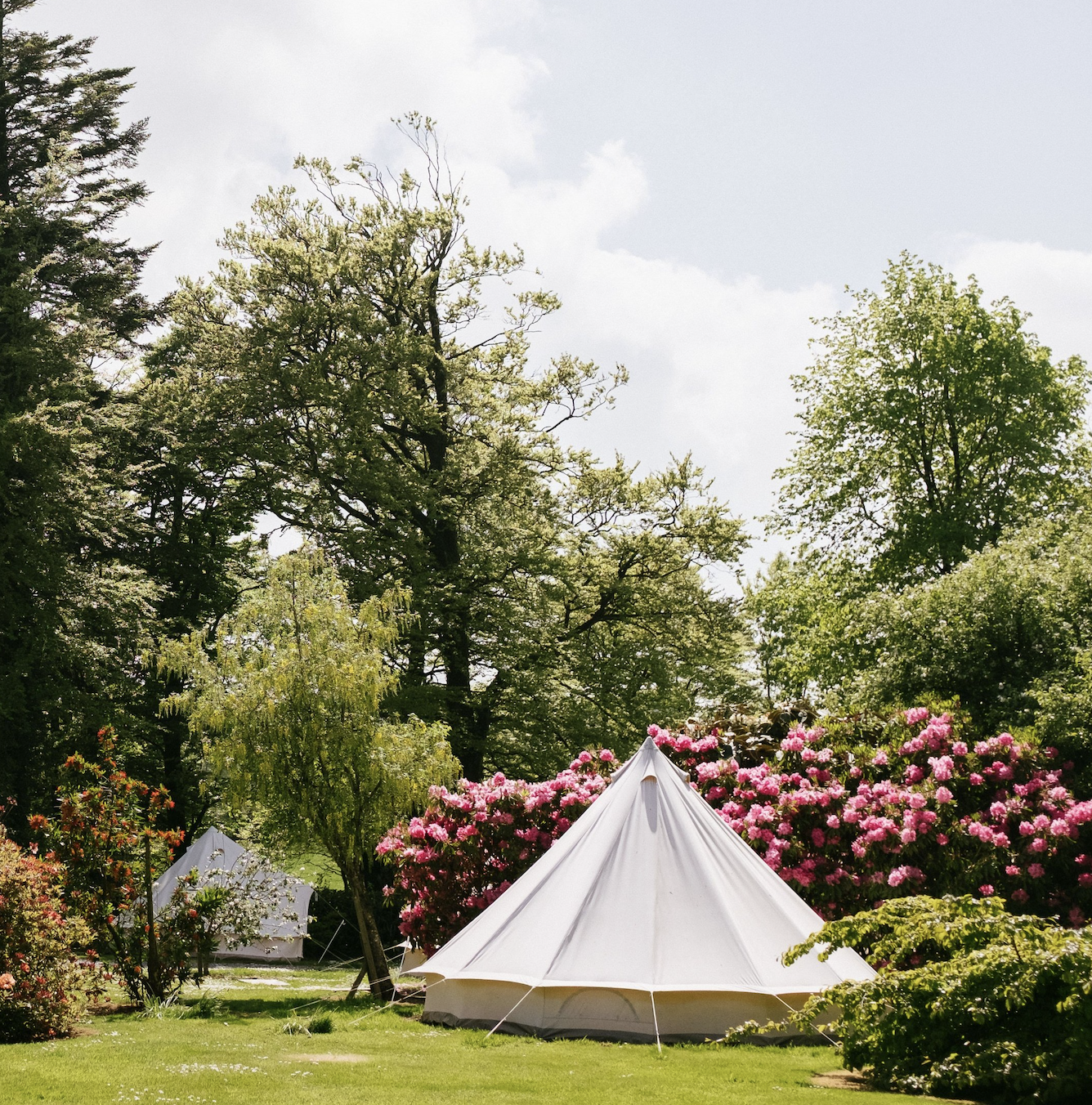Spotlight on Glamping Structures - Bell Tents
THE BELL TENT IS A DOMINANT FIXTURE AT MANY GLAMPTUARYS BECAUSE IT’S EASY TO PITCH, DURABLE, OFFERS A SPACIOUS INTERIOR, AND IS INEXPENSIVE TO PURCHASE.
WHO DESERVES THE CREDIT FOR THE INGENIOUS DESIGN OF THE BELL TENT? THAT’S AN ONGOING DEBATE.
IN THIS ARTICLE, WE’LL DIVE INTO THE ORIGIN STORIES AND EXPLORE GLAMPTUARYS AROUND THE GLOBE THAT OFFER A STAY IN THIS SIMPLE AND EFFECTIVE GLAMPING TENT.
ONE THING IS FOR CERTAIN, YOU’LL WANT TO ADD EVERY GLAMPTUARY FEATURED IN THIS ARTICLE TO YOUR TRAVEL BUCKET LIST!
Location - Mountain View Farm - Tilba Tilbs NSW, Australia
A truth is a collection of similar stories stitched together by a particular perspective. When the perspective changes (or the agenda), the truth changes.
This is the case with religion. It’s why there are many religions.
This is the case with science. It’s why there are debates about whether the Earth is flat or spherical.
This has been the case since humans started communicating with one another.
It’s why the movie A Christmas Carol has been made, adapted, and re-made 57 times, beginning in 1901. Is one version of A Christmas Carol more true than another? That depends on your perspective…
Scene from SCROOGE (c1901), a British silent film - Source - Wikipedia
Scene from SPIRITED (c2022), an American musical - Source - New York Times
At Glamptuary, we do our best to gather many perspectives when researching for information that eventually informs our articles. We don’t make any official claims about who did what, or where something came from. Our goal is to present our stories with the hope that it sparks more conversation, and hopefully more travel to one of the many Glamptuarys we feature on this blog.
As I was researching the history of bell tents, I found some conflicting stories about who invented it, where it was invented, and even what the original name of this tent was. This isn’t unusual. After all, we each have our version of a story to tell because…we each have a unique perspective on things.
From my perspective, the inspiration for the bell tent seems to come from two popular glamping structures we know and love - the tipi and the yurt.
Basically, if you took a tipi and placed it on top of the outer wall section of a yurt - you’d have a bell tent.
Of course, it’s a little more complicated than that, with some specific design and engineering changes that are unique to the bell tent.
The biggest difference is that in a bell tent, the main support structure is a single pole at the center of the tent, supported by guy lines extending from the pole, or exterior of the canvas to stakes in the ground. When pulled tight, the guy lines anchor the bell tent to the ground while supporting the pole, or canvas roof which is attached to the center pole. Neither the tipi or the yurt utilize a single center support pole or guy lines.
Now that we know what makes a bell tent unique…WHO deserves the credit for its design?
For starters…the indigenous peoples of the Americas and Asia who designed tipis and yurts deserve some credit. Their designs go back thousands of years.
From there, it falls into two camps (pun intended).
European soldiers began using a bell tent design during the Crimean War which began in 1853 and ended in 1856.
Architectural rendering of a Bell Tent from the 1850’s - Source - Canvas Camp
At about the same time in America, a soldier named Henry Hopkins Sibley invented a durable and easily transportable tent which resembled a tipi, but with the added center pole support structure (exactly like bell tents). His design differed from what was being used in Europe though as his design did not use any exterior guy lines.
Architectural renderings for the Sibley Tent - Source - Wikipedia
Henry Hopkins Sibley is often credited for designing the bell tent mainly because he held the patent for it, which he obtained in 1856 under the title of SIBLEY TENT. He eventually sold his design to the US Army, but was never paid royalties due to his alignment with the Confederate Army when the American Civil War erupted.
Is it possible both tent designs were invented during the same time period? Absolutely. Was one design influenced by the other? Unlikely…but it’s possible.
It’s clear to this glamper (me) that Henry Sibley’s tent does not look like the bell tents we see today (or what was used back in the 1850’s in the Crimean War) AND…both tent designs were technically in use at the same time in very different geographic locations.
It’s my humble opinion that someone, somewhere in Europe…invented the bell tent. And that person was not Henry Hopkins Sibley.
Who exactly deserves the credit for the bell tent will have to remain a mystery. At least for us at Glamptuary.
What’s not a mystery are all the wonderful Glamptuarys that offer a stay in a bell tent, combined with some fabulous on-site activities. Here are a few that we’ve added to our bucket list, and hopefully you’ll do the same:
MOUNTAIN VIEW FARM - TILBA TILBA NSW, AUSTRALIA
BALLYVOLANE - CORK, IRELAND
ELMLEY NATURE RESERVE - ISLE OF SHEPPEY, KENT, UNITED KINGDOM
HIGH HOUSE BARN + BREWERY - MATFEN, NEWCASTLE ON TYNE, UNITED KINGDOM
ODYSSEY ECO FARM - GALATAS, GREECE
SHASH DINÉ ECO RETREAT - PAGE, ARIZONA
Bell tents are about as close as you can get to tradtional camping.
If you’re a professional camper looking to baby step towards glamping - the bell tent is perfect for you. And if you like, you can always roll off the bed and sleep on the ground…if that’s the perspective you’re looking for.
Namasté and safe travels everyone!
I truly appreciate your time and if you’ve enjoyed what you’ve read - please share with your network.






































